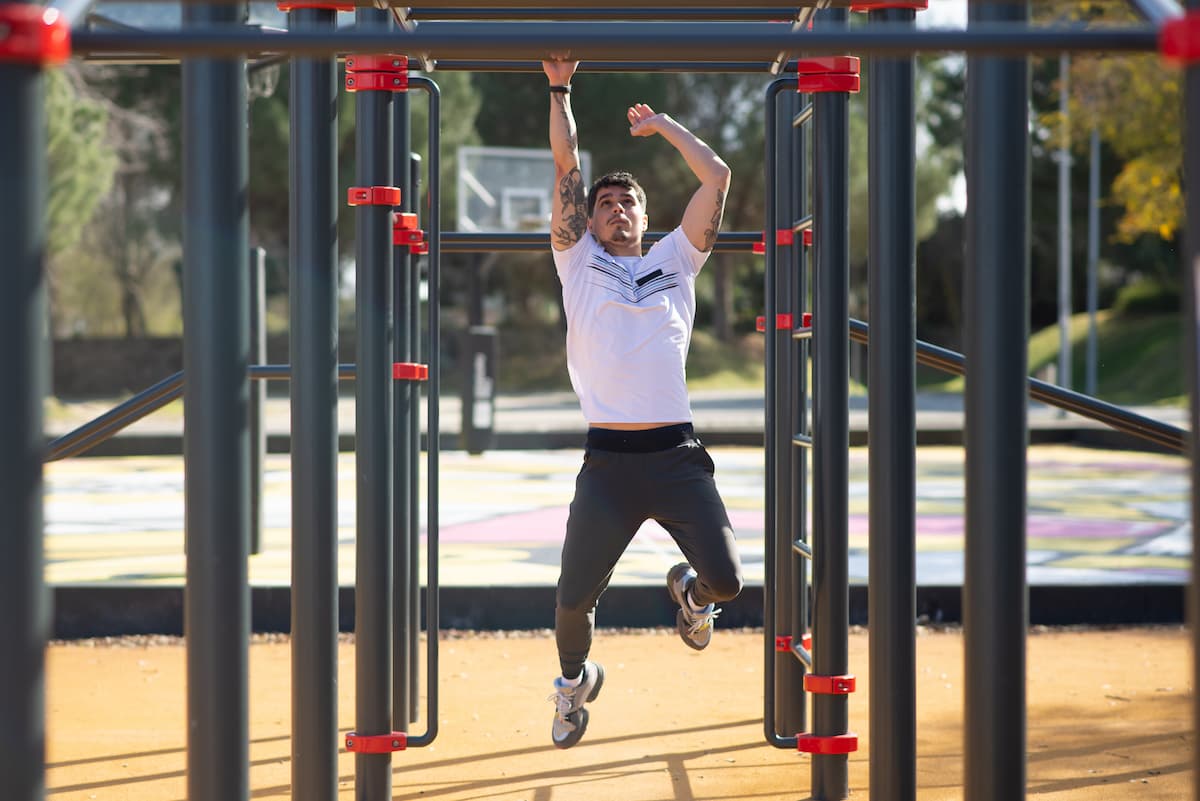Embarking on a calisthenics journey is an excellent way to improve your physical strength, endurance, and flexibility.
With no need for expensive gym memberships or specialized equipment, implementing calisthenics into your workout routine can be both accessible and cost-effective.
In this guide, we’ll cover the essentials of starting a calisthenics program, demonstrating key exercises, discussing common beginner problems, and providing helpful tips for maintaining proper safety and technique.
Fundamentals of Calisthenics Training
Calisthenics relies on bodyweight exercises that target various muscle groups, enabling individuals to develop functional strength and total body control.
Moreover, unlike traditional resistance training, calisthenics promotes full-body movement, making it ideal for enhancing mobility and preventing injury.
For optimal results, your calisthenics program should include exercises that focus on pushing movements, pulling movements, and core stability.
Additionally, leg work, balancing, and stretching exercises should be incorporated to create well-rounded fitness routines.
Warm-Up and Connective Tissue Considerations
Before diving into your calisthenics session, always make sure you’re adequately warmed up.
This ensures that your joints and connective tissues are prepared to handle the load placed on them during exercise.
A mixture of dynamic stretches and light cardio, such as jogging or jumping jacks, only takes a few minutes but can go a long way in reducing the risk of injury.
Essential Calisthenic Exercises
Incorporating these foundational calisthenics movements will assist beginners in developing well-rounded strength and technique:
- Pull-ups: This upper-body exercise is great for working the lats, biceps, and back muscles. All you need is a sturdy horizontal bar or exercise bar to complete this movement.
- Push-ups: Push-ups effectively target the chest, shoulders, and triceps, and can be modified to match your fitness level.
- Dips: Ideal for triceps development, dips engage the chest, shoulders, and core muscles as well. Using parallel bars or any two horizontal surfaces of equal height, lower your body until your arms reach 90 degrees before pushing yourself back up.
- Squats: This fundamental leg exercise activates the glutes, quads, hamstrings, and calves.
- Plank Variations: Planks are a staple core exercise that can be adjusted to target different areas, such as side planks for oblique work.
Balancing Exercises
Including balancing exercises in your calisthenics workout provides an added challenge to your stability and proprioception.
Some examples of balancing exercises include single-leg squats, handstands against a wall, or L-sits.
Progressing Through Your Calisthenics Program
As with any workout program, it’s crucial to monitor your progress regularly. Consistent tracking will help identify weaknesses and provide clarity on how to modify your program to see continued improvements.
- Setting Goals: Having clear objectives makes it more likely that you will stay committed to your program. Set both long-term goals and short-term milestones that offer measurable indicators of success.
- Consistency Matters: Dedication to regular workouts is vital to achieving the desired results. Aim for at least three sessions per week, with each session lasting around 45 minutes to an hour.
- Variety Is Key: To avoid plateaus and prevent boredom, it’s critical to change up your workouts occasionally. This can be done by varying exercise order, modifying intensity, or swapping out exercises altogether.
- Build Your Strength Gradually: Completing multiple sets of fewer repetitions with proper form is more beneficial than struggling through higher rep ranges with suboptimal technique. Keep pushing yourself but prioritize the quality of movements.
Calisthenics Safety Tips and Common Beginner Problems
Injury prevention should be a top priority when starting any workout program, and calisthenics is no exception.
These guidelines will help mitigate injury risk and ensure a safe, effective workout experience:
- Take care of your joints – make sure to warm up properly before each session and always use appropriate progressions.
- Listen to your body – if you’re experiencing pain during specific exercises, don’t push through it. Assess potential movement or form issues before continuing.
- Keep your ego in check – focus on perfecting form instead of trying advanced exercises too soon.
- Allow adequate recovery time – rest days are just as important as consistent workouts. Overtraining can backfire and lead to increased injury risk.
Addressing Common Beginner Problems
A few common beginner problems often surface when starting calisthenics. Being proactive about addressing these issues can result in a smoother learning process:
- Grip Issues: When performing pull-ups or hangs, beginners may experience limited grip strength. Incorporating exercises such as farmer’s walks or dead hangs can help strengthen forearm and grip muscles.
- Wrists: Wrist discomfort is a common occurrence, especially during push-ups and handstands. To alleviate strain on the wrist joint, incorporate stretches and mobility drills into your warm-up routine.
- Core Stability: A weak core can contribute to poor form and increase injury risk. Planks, hollow body holds, and leg raises are great exercises to improve core strength.
Finding Inspiration and Community Support
Having a supportive network can make all the difference in finding calisthenics success.
Channels like Instagram, fitness forums, and local meetups can expose you to advanced practitioners who offer motivation and helpful guidance, not to mention camaraderie with fellow beginners sharing their personal experiences and breakthroughs.
Feel free to reach out, participate in discussions, and share your journey within these communities!

